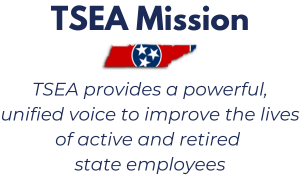Compensatory Time, or comp time as it is most often called in the work place, is leave with pay earned by an employee who works overtime (OT) but whose job is not eligible for cash OT under the Federal Labor Standards Act (FLSA). Employees, whose positions are considered exempt under FLSA, are instead granted time off with pay on an hour-for hour basis for hours worked above 37.5 in the employees’ regularly scheduled work week.
If approved, the employee would earn regular comp time for hours worked up to 40 in a work week if their regularly scheduled hours per week are 37.5. Premium comp time at time and one-half (1 1/2) would be earned for hours worked over 40 in a work week. Overtime worked and paid as comp time must be approved by an employee’s supervisor prior to working the extra hours just as it would be for cash OT.
Request for comp time off is subject to the approval of the employee’s supervisor, in much the same way as the request for annual leave. Supervisors can also schedule employees to take comp time off in an effort to reduce their leave balances when the agency can best spare the employee. If an employee requests time off, comp time will be used first if available; OR if a supervisor schedules an employee to take comp time the employee will be scheduled to use comp time, unless the following circumstance applies:
When an employee is within two days of their maximum annual leave accrual at the beginning of the pay period for their service group*, requests time off or is scheduled by their supervisor to take time off as comp time, the employee has a choice to take either annual or comp time off; however if the employee does not wish to take off at that time, the employee cannot be forced to take leave. When the employee’s annual leave falls more than two (2) days below their maximum annual accrual, comp time will be used.
Before scheduling comp time can occur for a non-exempt employee who’s chosen to earn comp time rather than cash OT, a written policy or a handbook must be provided by the agency and notification given to employees before scheduling comp time can occur. A maximum of 240 hours may be accrued by non-exempt employees who choose to receive comp OT rather than cash OT for hours worked over 37.5 in a work week.
An employee can be scheduled to take a comp day off in a week with a holiday if the holiday is their regularly scheduled work day. The supervisor may schedule the employee to take another day off in that week. This does not reduce the employee’s current comp balance; it gives the employee their holiday that week with no additional comp time accrued.
Comp time balances transfer between state agencies in most circumstances. However, if an employee transfers from one state agency to another that will not accept the employee’s comp time balance, the employee’s current state agency must compensate the employee for the value of the employees’ comp time balance before the transfer takes place.
Any comp leave remaining at an employee’s retirement must be used prior to using their annual leave (the annual leave balance of a retiring employee is called terminal leave). The employee may choose to remain on payroll and run out their comp leave first, followed by their terminal leave; or they may choose to be paid for both leave balances in a lump sum.
The maximum comp time balance an employee in the state may accrue is 480 hours (unless advance approval is requested and received by DOHR and F&A Commissioners). Overtime earned above 480 hours must be paid to the employee in cash. Public Safety employees may earn up to a maximum of 480 hours of compensatory time. No employee may accrue more than 480 hours of comp time when regular and premium comp OT balances are combined unless approved by DOHR and F&A. Any excess earned must be paid in cash.
Any premium comp time accrual will be used first until exhausted when an employee requests comp time off; then regular comp leave will be used. Should an employee with a comp leave balance later become executive level, their balance may be retained and used unless the assignment is for a limited term. Executive level employees are prohibited from earning additional comp time.
Comp time may be used by an employee for absence for military duty while receiving pay from the federal government.
Service Group 1 – Less than 5 years FT Service
Mo. Accural for 7.5 Hour Employee: 7.5
Annual Max Days/Hrs: 30/225
Mo. Accural for 8 Hour Employee: 8
Annual Max Days/Hrs: 30/240
Service Group 3 – 5 but less than 10 years FT Service
Mo. Accural for 7.5 Hour Employee: 11.3
Annual Max Days/Hrs: 36/270
Mo. Accural for 8 Hour Employee: 12.0
Annual Max Days/Hrs: 36/288
Service Group 4 – 10 but less than 20 years FT Service
Mo. Accural for 7.5 Hour Employee: 13.2
Annual Max Days/Hrs: 39/292.5
Mo. Accural for 8 Hour Employee: 14.0
Annual Max Days/Hrs: 39/312
Service Group 5 – 20 or more years FT Service
Mo. Accural for 7.5 Hour Employee: 15.0
Annual Max Days/Hrs: 42/315
Mo. Accural for 8 Hour Employee: 16.0
Annual Max Days/Hrs: 42/336
Service Group 6
Temporary employees (with less than six (6) months service), emergency and limited full-time employees are eligible to receive longevity but are not eligible to accrue annual or sick leave.
*Service Groups for annual leave accrual earned monthly and maximum accumulations annually are listed above. Annual and sick leave are accrued by employees who work the major portion of the work days in any month. The major portion of a month is 1/10 (0.1) of one (1) hour over 50% of the employee’s scheduled working hours in any month. Please note there is no Service Group 2.
Have more questions about Comp Time, TCRS or your insurance benefits? Call TSEA’s Compensation & Benefits Department to speak with Gwen or Gayle at (615) 256-4533 or toll FREE at 1-800-251-TSEA (8732).










